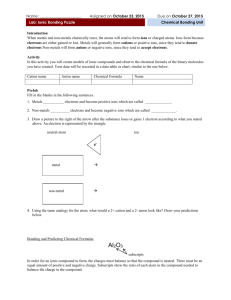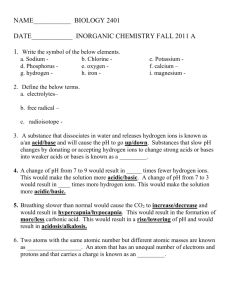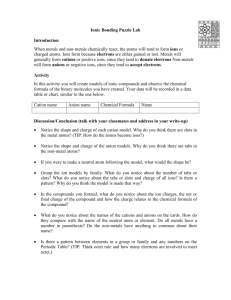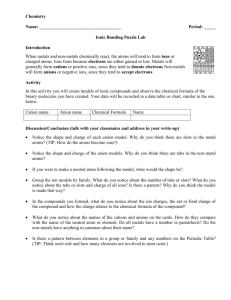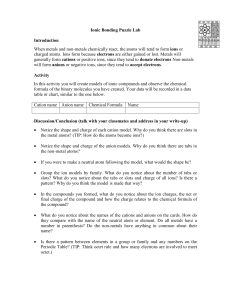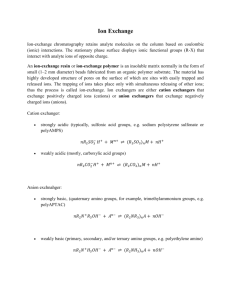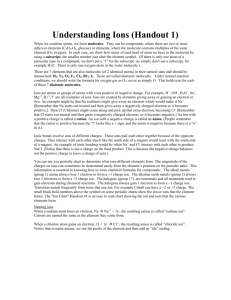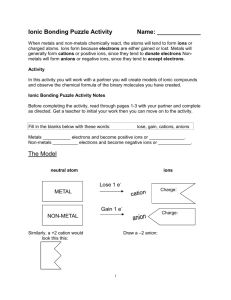Ionic Bonding Model Cards
advertisement
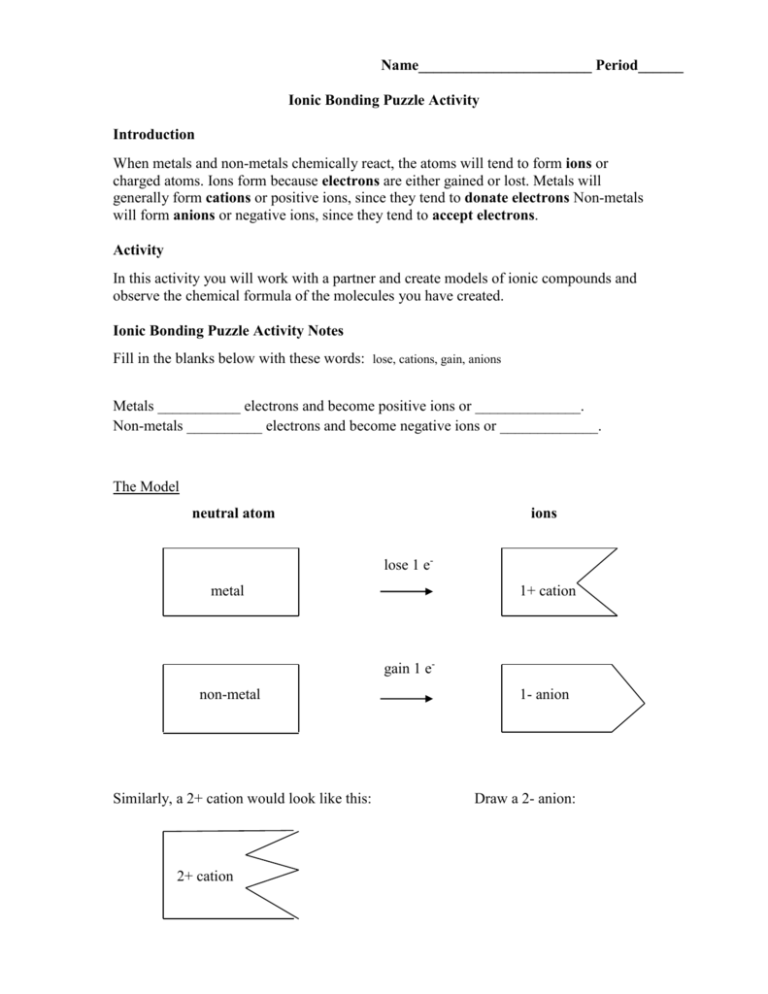
Name_______________________ Period______ Ionic Bonding Puzzle Activity Introduction When metals and non-metals chemically react, the atoms will tend to form ions or charged atoms. Ions form because electrons are either gained or lost. Metals will generally form cations or positive ions, since they tend to donate electrons Non-metals will form anions or negative ions, since they tend to accept electrons. Activity In this activity you will work with a partner and create models of ionic compounds and observe the chemical formula of the molecules you have created. Ionic Bonding Puzzle Activity Notes Fill in the blanks below with these words: lose, cations, gain, anions Metals ___________ electrons and become positive ions or ______________. Non-metals __________ electrons and become negative ions or _____________. The Model neutral atom ions lose 1 e- metal 1+ cation gain 1 enon-metal Similarly, a 2+ cation would look like this: 2+ cation 1- anion Draw a 2- anion: Bonding and Predicting Chemical Formulas Al2O3 2Aluminum ions 3 Oxide ions Fill in the blanks below with these words: subscripts, compound, ions, charge, number, ratio, formula, balance, zero The ______________ show the ___________ of each atom in the ________________. For an ionic bond, the charges of the _______ need to add up to _____________. The chemical ___________ shows how many of each ion is needed to _____________ the ____________ and make the compound neutral. The __________ of the ions should be in lowest terms. What ratio will the +1 and -1 ions combine to balance the charge? 1+ ion 1- ion + ________________ What ratio will the 2+ and 1- ions combine to balance the charge? + _________________ Activity Cut out the ion puzzle pieces and create the bonds listed. Fill in the chart for each compound. See the example below: Example: potassium and chlorine Ion name Ion symbol Anion/Cation How many? Chemical Formula Potassium K+ Cation 1 Chlorine Cl- Anion 1 KCl Draw your own table and make the compounds from the following list. You will need to use the wildcard ions if you do not have enough of a certain ion. 1. Lithium and oxygen 2. Sodium and fluorine 3. Titanium (IV) and oxygen 4. Iron (II) and oxygen 5. Iron (III) and oxygen 6. Yttrium (III) and chlorine 7. Calcium and nitrate 8. Copper (I) and phosphide 9. Magnesium and nitride 10. Copper (II) and phosphide 11. Aluminum and bromine 12. Silver and iodine 13. FFluoride Na+ Sodium Mg2+ Magnesium Y3+ Yttrium(III) FFluoride K+ Potassium ClChloride K+ Potassium N3Nitride Mg2+ Magnesium ClChloride Fe3+ Iron(III) K+ Potassium BrBromide P3Phosphide Ag+ Silver Ca2+ Calcium BrBromide Cu+ Copper(I) 1- Anion Wildcard Fe2+ Iron(II) Li+ Lithium 2+ Cation Wildcard 3- Anion Wildcard S2Sulfide Ca2+ Calcium O2Oxide Cu2+ Copper(II) 1+ Cation Wildcard Li+ Lithium Li+ Lithium IIodide Ti4+ Titanium (IV) O2Oxide Na+ Sodium Al3+ Aluminum 2- Anion Wildcard Na+ Sodium IIodide
